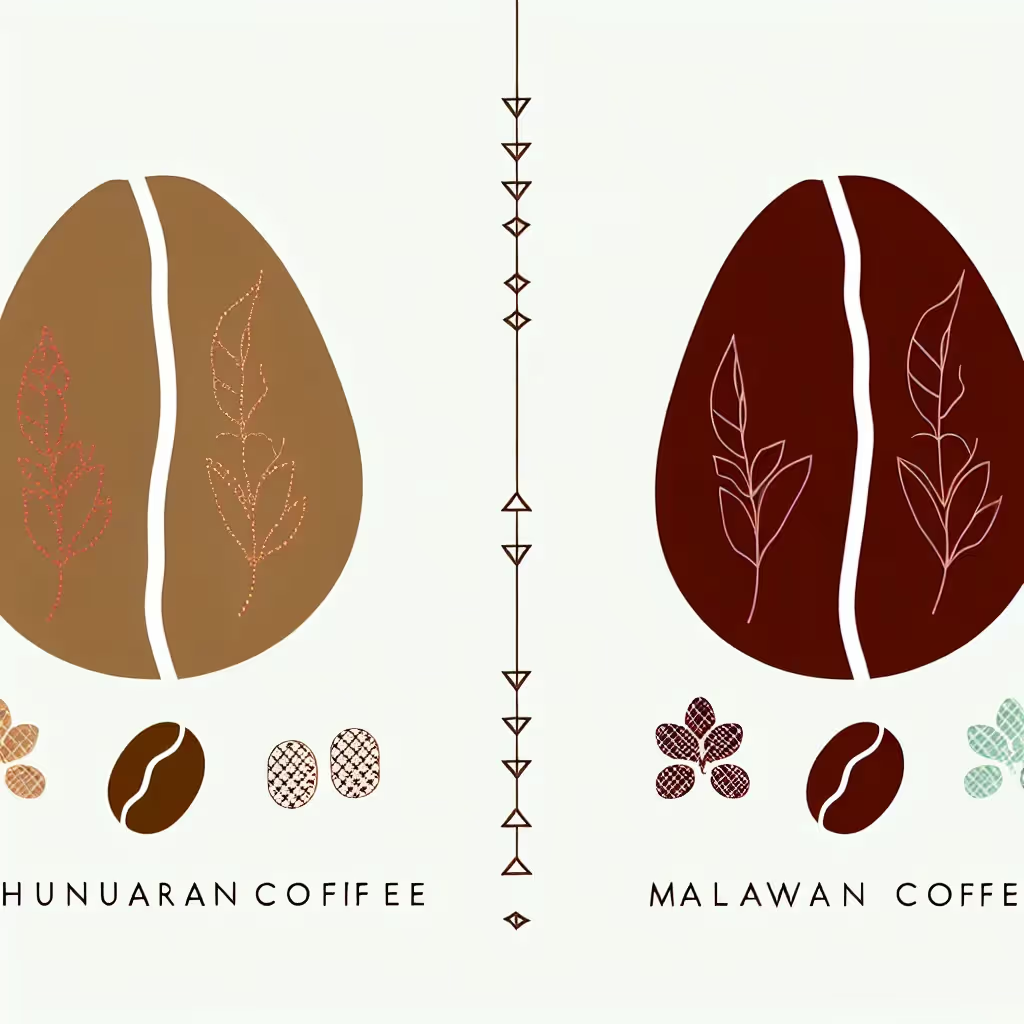Honduran Vs. Malawian Coffee
This comparison explores the unique qualities of Honduran and Malawian coffee beans, highlighting their distinct flavor profiles, growing conditions, and brewing methods to help coffee enthusiasts make informed choices.

Brief Description
Honduran coffee is a hidden gem in the world of specialty coffee, offering a delightful balance of sweetness and acidity. Grown in the lush mountains of regions like Copán, these beans benefit from ideal growing conditions, resulting in a cup that's both complex and approachable. With notes ranging from chocolate to tropical fruits, Honduran coffee is rapidly gaining recognition for its unique flavor profile and consistent quality.
Malawian coffee is a hidden gem in the African coffee scene, known for its bright acidity and complex flavor profile. Grown in the southern regions of Malawi, these beans benefit from the country's unique terroir, combining high altitudes, rich volcanic soils, and a favorable climate. Malawian coffee often surprises coffee enthusiasts with its clean cup, vibrant notes, and subtle sweetness, making it a delightful discovery for those seeking new and exciting coffee experiences.
Importance of Comparison
Comparing Honduran and Malawian coffee is crucial for coffee lovers seeking to expand their palate and explore lesser-known origins. Both countries offer unique flavor profiles and growing conditions that contribute to their distinctive tastes. Understanding these differences helps consumers make informed decisions when purchasing single-origin coffees and appreciate the diversity of the global coffee landscape.
Key Attributes
Origin
Honduran
Malawian


Consumer Guide
When choosing between Honduran and Malawian coffee, consider your flavor preferences. Honduran coffee offers a balanced profile with chocolate, caramel, and citrus notes, ideal for those who enjoy a well-rounded cup. Malawian coffee, with its bright acidity and floral notes, appeals to those seeking a more vibrant and complex flavor experience. For brewing, both origins excel in pour-over and French press methods. Honduran beans are also great for espresso, while Malawian beans shine in cold brew. Consider the annual production: Honduras produces significantly more coffee, making it more readily available, while Malawian coffee's limited production adds to its exclusivity. Ultimately, try both to discover your personal preference in these unique single-origin coffees.
Expert Opinions
Coffee expert Maria Rodriguez notes, 'Honduran coffee has been gaining recognition for its consistent quality and approachable flavor profile. It's a great introduction to Central American coffees.' On Malawian coffee, roaster John Smith comments, 'The bright acidity and complex flavors of Malawian beans make them a hidden gem in the African coffee scene. It's a must-try for those looking to explore unique taste experiences.' Both experts agree that these origins offer excellent value for coffee enthusiasts seeking to diversify their palate.
FAQs
Honduran coffee typically offers a balanced profile with notes of chocolate, caramel, and citrus, while Malawian coffee is known for its bright acidity, floral notes, and subtle chocolate undertones. Honduran coffee tends to be more approachable, while Malawian coffee often provides a more complex and vibrant flavor experience.
Both countries have high-altitude growing regions, with Honduras ranging from 1000-1700m and Malawi from 1000-2000m. Honduras benefits from lush mountain landscapes, while Malawi's coffee grows in rich volcanic soils. These unique terroirs contribute to the distinct flavor profiles of each origin.
Both Honduran and Malawian coffees excel in pour-over and French press methods. Honduran beans are also well-suited for espresso, highlighting their balanced flavor profile. Malawian beans shine in cold brew preparations, which can enhance their bright and complex notes.
Honduran coffee is more widely available due to its larger annual production of around 475,000 metric tons. Malawian coffee, with an annual production of about 1,500 metric tons, is less common and may be considered more exclusive. This difference in availability can affect pricing and accessibility for consumers.
Honduran coffee is gaining recognition for its consistent quality and approachable flavor profile, making it a rising star in Central American coffees. Malawian coffee, on the other hand, is a hidden gem in the African coffee scene, offering surprising complexity and vibrant flavors that appeal to adventurous coffee enthusiasts.
Both Honduran and Malawian coffees utilize similar processing methods, including washed, natural, and honey processes. This variety in processing allows for diverse flavor profiles within each origin, giving coffee lovers the opportunity to explore different taste experiences from the same country.
Conclusion
Comparing Honduran and Malawian coffee reveals two distinct and exciting single-origin experiences. Honduran coffee offers a balanced, approachable profile with chocolate, caramel, and citrus notes, ideal for those seeking a well-rounded cup. Malawian coffee surprises with its bright acidity, floral notes, and complex flavor profile, appealing to adventurous coffee enthusiasts. Both origins excel in various brewing methods and showcase the unique terroirs of their respective countries. Whether you prefer the consistency and availability of Honduran beans or the exclusivity and vibrant flavors of Malawian coffee, exploring these origins will undoubtedly enrich your coffee journey and broaden your appreciation for the diverse world of specialty coffee.






